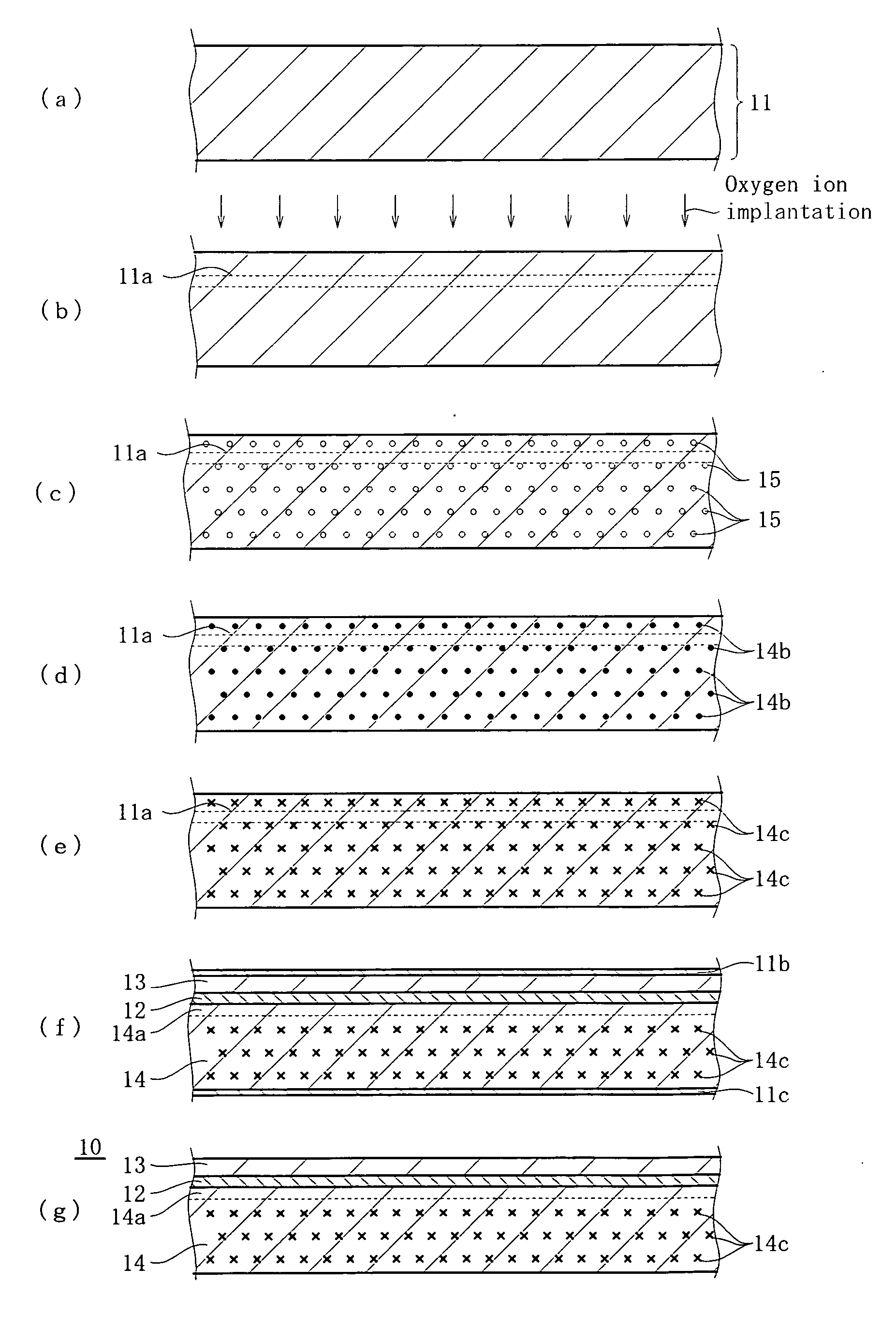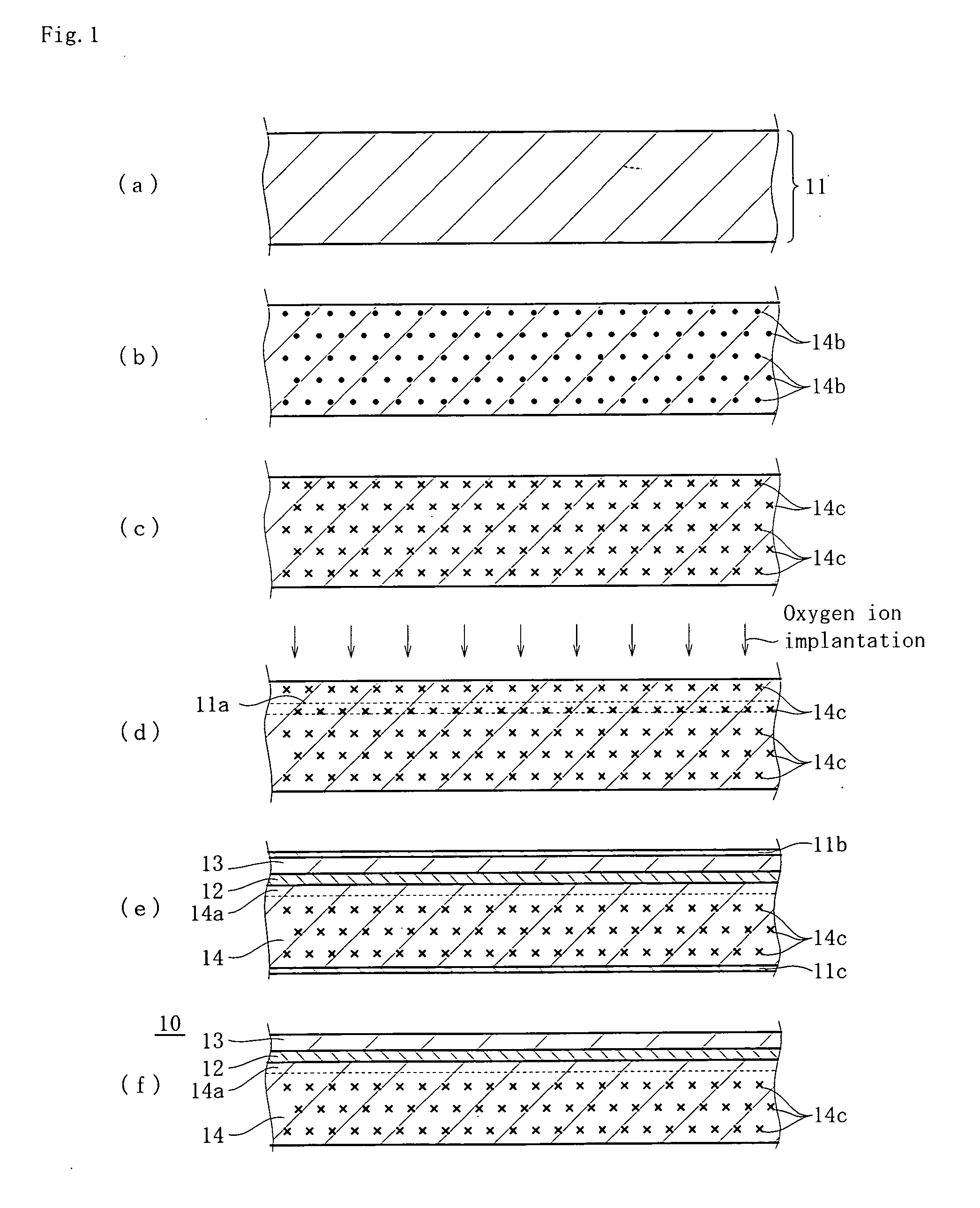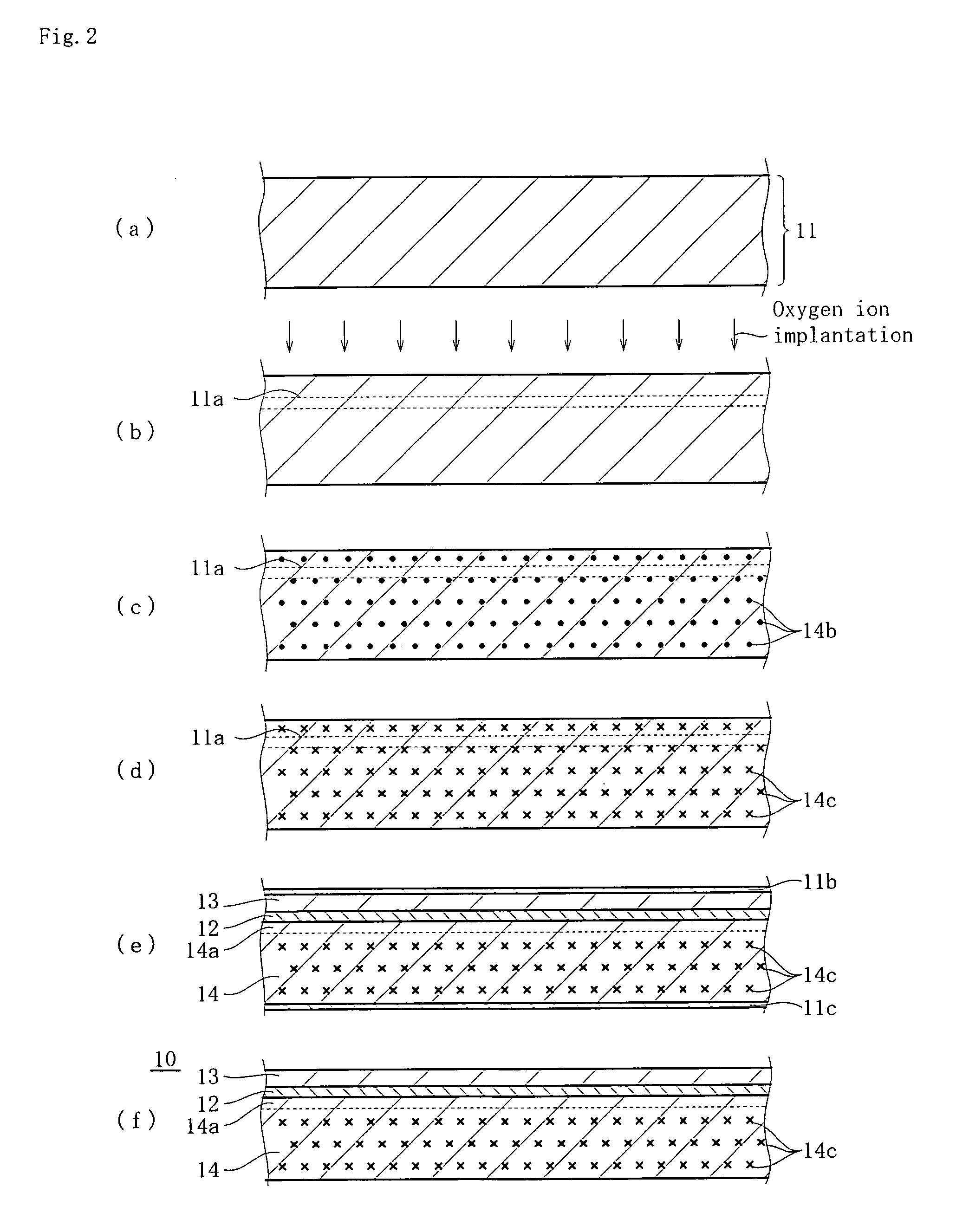Method for Manufacturing Simox Substrate and Simox Substrate Obtained by the Method
a technology of simox substrate and simox substrate, which is applied in the direction of water-setting substance layered products, vacuum evaporation coatings, coatings, etc., can solve the problems of insufficient gettering effect and difficulty in forming oxygen precipitates, so as to reduce the concentration of heavy metal capturing in the defect collection layer, effectively capture heavy metal in the bulk layer, and reduce the effect of heavy metal capturing
- Summary
- Abstract
- Description
- Claims
- Application Information
AI Technical Summary
Benefits of technology
Problems solved by technology
Method used
Image
Examples
example 1
[0086] First, as shown in FIG. 3(a), there was prepared a CZ silicon wafer cut into a predetermined thickness from silicon ingot having oxygen concentration of 1.2×1018 atoms / cm3 (old ASTM) and a resistivity of 20 Ω·cm grown by the CZ method. Then, as shown in FIG. 3(b), rapid heat treatment was performed in which after continuously raising the temperature of the wafer under an ammonia gas atmosphere from 500 to 1,150° C. at 25° C. / second, the wafer was held at 1,150° C. for 15 seconds and then temperature is lowered up to 500° C. at the temperature lowering rate of 25° C. / second. Then, as shown in FIG. 3(c), second heat treatment for holding the rapid-heat-treated wafer 11 under a nitrogen atmosphere at 800° C. for 4 hours was applied to the rapid-heat-treated wafer 11. Then, as shown in FIG. 3(d), third heat treatment was performed which holds the rapid-heat-treated wafer 11 under a 3%-oxygen gas (nitrogen gas base) atmosphere at 1000° C. for 16 hours. Then, as shown in FIG. 3(e),...
example 2
[0091] First, as shown in FIG. 4(a), there was prepared a CZ silicon wafer cut into a predetermined thickness from silicon ingot having an oxygen concentration of 1.2×1018 atoms / cm3 (old ASTM) and resistivity of 20 Ω·cm grown by the CZ method. Then, as shown in FIG. 4(b), the wafer is heated to a temperature of 550° C. or lower and in this state, oxygen ions were implanted into a predetermined region of the silicon wafer (for example, region at about 0.4 μm from the surface of a substrate) under the same conditions as in the above example 1. After implanting oxygen ions, SC-1 and SC-2 cleanings were applied to the surface of the wafer. Then, as shown in FIG. 4(c), the temperature of the wafer was continuously raised up to 500 to 1150° C. at 25° C. / second under an ammonia gas atmosphere and then the wafer was held at 1,150° C. for 15 seconds and then rapid heat treatment for lowering the temperature of the wafer up to 500° C. at temperature lowering rate of 25° C. / second was applied ...
example 3
[0092] First, as shown in FIG. 1(a), there was a CZ silicon wafer cut into a predetermined thickness from silicon ingot having an oxygen concentration of 1.3×1018 atoms / cm3 (old ASTM), carbon concentration of 5×1016 atoms / cm3 (old ASTM) and a resistivity of 200 Ω·cm grown by the CZ method. Then, as shown in FIG. 1(b), second heat treatment was performed which held the wafer 11 under a 3%-oxygen gas atmosphere (argon gas base) at 800° C. for 4 hours. Then, as shown in FIG. 1(c), third heat treatment was performed which held the second-heat-treated wafer under a 3%-oxygen gas (argon gas base) atmosphere at 1000° C. for 8 hours. Then, as shown in FIG. 1(d), the wafer was heated to a temperature of 550° C. or lower and in this state, oxygen ions were implanted into a predetermined region of the silicon wafer (for example, region at about 0.4 μm from substrate surface) under the same conditions as in the above Example 1.
[0093] After implanting ions, SC-1 and SC-2 cleanings were applied ...
PUM
| Property | Measurement | Unit |
|---|---|---|
| Temperature | aaaaa | aaaaa |
| Temperature | aaaaa | aaaaa |
| Temperature | aaaaa | aaaaa |
Abstract
Description
Claims
Application Information
 Login to View More
Login to View More - R&D
- Intellectual Property
- Life Sciences
- Materials
- Tech Scout
- Unparalleled Data Quality
- Higher Quality Content
- 60% Fewer Hallucinations
Browse by: Latest US Patents, China's latest patents, Technical Efficacy Thesaurus, Application Domain, Technology Topic, Popular Technical Reports.
© 2025 PatSnap. All rights reserved.Legal|Privacy policy|Modern Slavery Act Transparency Statement|Sitemap|About US| Contact US: help@patsnap.com



